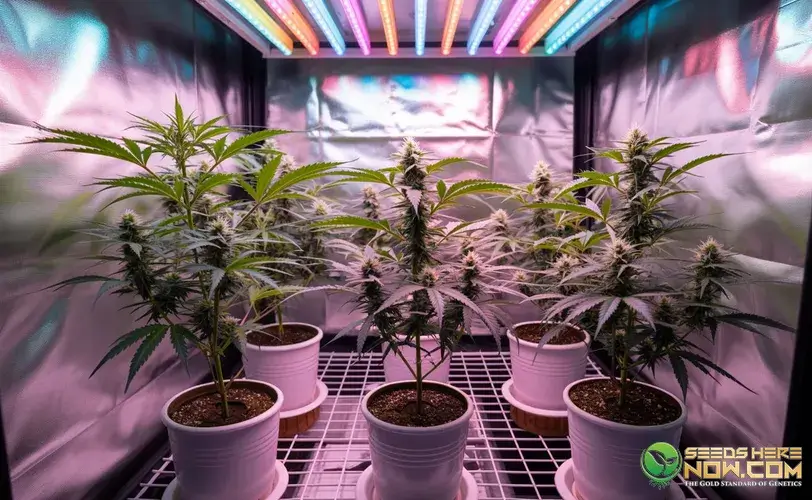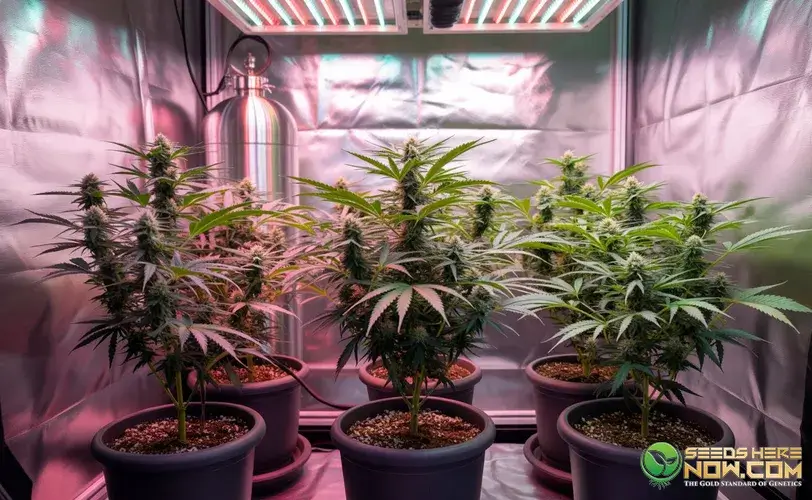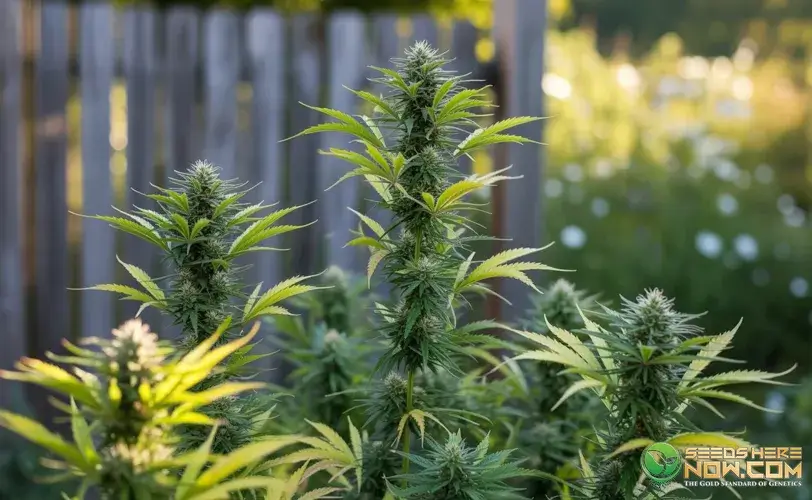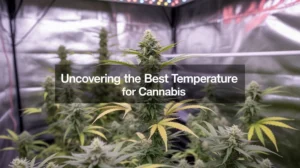The Optimal Cannabis Growing Environment: Mastering the Art of Indoor and Outdoor Cultivation

Cannabis cultivation is both a science and an art. Whether you’re growing a few plants in your closet or managing a commercial grow operation, understanding how to create the optimal cannabis growing environment is essential for maximizing potency, yield, and overall plant health. In this comprehensive guide, we’ll walk through everything from temperature and humidity to lighting, airflow, and carbon dioxide—providing the tools and insights you need to create a thriving grow space.
Why the Cannabis Environment Matters
Cannabis plants are highly responsive to their environment. Light, temperature, humidity, airflow, and carbon dioxide levels influence the plant’s growth rate and structure, resistance to disease and pests, terpene and cannabinoid development, and final yield and bud density.
In the wrong environment, even elite genetics won’t thrive. But in the right environment, average genetics can flourish into top-shelf flower.
Lighting: The Engine of Photosynthesis
Lighting is arguably the most important environmental factor. It is the plant’s primary energy source and drives photosynthesis, the process that fuels all growth stages. Without proper light intensity and spectrum, plants may stretch unnecessarily, produce fewer branches, or develop loose, airy buds.
Each stage of growth requires a specific intensity and color spectrum, and failing to meet those needs can limit the plant’s potential. For indoor growers, lighting must replace the sun entirely, which means the quality and setup of your lights will directly determine your crop’s success.
Indoor Lighting Essentials
-
Seedling stage: 100–300 PPFD (photosynthetic photon flux density)
-
Vegetative stage: 400–600 PPFD
-
Flowering stage: 700–1,000+ PPFD
Spectrum Tips
-
Vegging: Use a blue-rich spectrum (5,000K–6,500K) to promote short, bushy growth.
-
Flowering: Use a red-rich spectrum (2,700K–3,500K) to encourage bud development.
Recommended Lights
-
LEDs: Energy-efficient, cool-running, and spectrum-controllable
-
HPS (high-pressure sodium): Great for flowering, but produce a lot of heat
-
CMH (ceramic metal halide): Full-spectrum coverage with excellent PAR output
Pro tip: Keep lights 18 to 36 inches from the canopy depending on wattage and type.
Temperature Control: Finding the Sweet Spot
Temperature plays a significant role in plant metabolism. It influences everything from enzymatic activity and water absorption to the rate of photosynthesis and nutrient uptake. Sudden fluctuations or extremes—whether too hot or too cold—can disrupt growth, reduce yields, and trigger issues like hermaphroditism or nutrient lockout.
Each stage of growth has an optimal temperature range, and maintaining consistent warmth appropriate to that stage will support faster growth, stronger plant structure, and more resinous flowers.
Ideal Temperature Ranges
Seedling stage
-
Day: 68 to 77 degrees Fahrenheit
-
Night: 65 to 70 degrees Fahrenheit
Vegetative stage
-
Day: 70 to 85 degrees Fahrenheit
-
Night: 65 to 75 degrees Fahrenheit
Flowering stage
-
Day: 65 to 80 degrees Fahrenheit
-
Night: 60 to 70 degrees Fahrenheit
A daytime range of 75 to 78 degrees Fahrenheit is ideal for most setups.
Humidity: Balance Is Key
Humidity influences how your plants transpire, which affects nutrient uptake and water balance. When relative humidity (RH) is too high, it can create conditions ripe for mold, mildew, and other pathogens. When RH is too low, plants may lose water too quickly, leading to stress and nutrient imbalances.
Like temperature, ideal humidity varies by growth stage, and getting it right ensures that your plants can take in moisture and nutrients efficiently. Striking the right balance allows for healthy stomatal function, vibrant foliage, and optimal bud development.
Ideal Relative Humidity by Stage
-
Seedlings: 65% to 70%
-
Vegetative: 55% to 70%
-
Flowering: 40% to 50%
-
Late flowering: 30% to 40%
Tools to Manage Humidity
-
Humidifiers, dehumidifiers, and air conditioners
-
Exhaust fans with carbon filters
-
Oscillating fans for air circulation
Use a hygrometer in multiple zones to monitor relative humidity accurately.
Airflow and Ventilation: Keep It Moving
Airflow is a vital but often underestimated element in cannabis cultivation. Proper air circulation strengthens plant stems, helps regulate temperature and humidity, prevents mold and pest outbreaks, and ensures an even distribution of carbon dioxide—a critical input for photosynthesis.
Without adequate airflow, grow spaces can develop hot spots and pockets of stale, humid air that promote disease. A consistent breeze encourages the plant to develop sturdier branches, making it better able to support heavy flowers during the later stages of growth. Additionally, ventilation systems help remove excess heat and bring in fresh air, maintaining a healthy, oxygen-rich environment for both roots and foliage.
Best Practices
-
Place oscillating fans above, below, and around the canopy.
-
Use intake and exhaust fans to manage air exchange.
-
Maintain a slight negative pressure to prevent odor leaks.
Rule of thumb: Replace the air in your grow space every one to three minutes.
Carbon Dioxide Levels: Boosting Plant Metabolism
Carbon dioxide, or CO₂, is essential for photosynthesis. It acts as a building block in the process by which plants create glucose, their main source of energy. In nature, CO₂ levels average around 400 parts per million (ppm), which is generally sufficient outdoors. However, in enclosed grow rooms, CO₂ can be quickly depleted due to the plants’ constant uptake during photosynthesis.
When levels fall below ambient, growth slows significantly because the plant lacks the raw materials it needs to produce energy. Supplementing CO₂ in a sealed environment—especially one using high-intensity lighting—can result in accelerated growth rates, increased flower size, and higher yields, but only if other environmental conditions are also optimized.
CO₂ Optimization
-
Ambient: 350 to 450 ppm
-
Supplemented: 800 to 1,200 ppm (ideal for high-light grow spaces)
Only supplement CO₂ if:
-
Your lights exceed 700 PPFD,
-
Your room is well-sealed,
-
You can maintain proper temperature and humidity.
CO₂ without enough light leads to wasted resources.
CO₂ Delivery Options
-
Compressed tanks and regulators
-
CO₂ bags (mycelium-based)
-
CO₂ generators (for large-scale grows)
Grow Medium and Containers
The foundation of every healthy cannabis plant lies in the medium that supports its roots. Your choice of grow medium impacts the root-zone environment, which is critical to nutrient uptake, water retention, and oxygen availability.
Different media offer distinct advantages, whether it’s the nutrient-holding capacity of soil, the fast drainage of coco coir, or the highly oxygenated conditions of hydroponic setups. Selecting the right medium depends on your experience level, growing style, and desired level of control.
Equally important is container selection, as size, material, and drainage all influence how roots develop and how efficiently the plant can access the resources it needs. A well-matched combination of medium and container helps establish a robust root system, which translates directly to stronger vegetative growth and more prolific flowering.
Popular Mediums
-
Coco coir: Great drainage, fast vegetative growth
-
Soil: Easier to manage, buffered pH
-
Rockwool: Clean and ideal for hydroponic systems
-
Deep water culture (DWC): Maximum nutrient access in hydroponics
Choose containers that provide proper drainage, aeration, and volume. For most indoor photoperiod plants, a 3-gallon fabric pot is ideal.
pH and Electrical Conductivity
Understanding the chemical balance of your growing environment is essential for successful cannabis cultivation, and that starts with monitoring pH and electrical conductivity (EC).
pH determines how acidic or alkaline your water and nutrient solution are, which in turn affects how available nutrients are to the plant. EC measures the concentration of nutrients in your solution and helps you avoid underfeeding or overfeeding.
pH and EC (electrical conductivity) impact how well your plants absorb nutrients. Incorrect values can cause lockout or burn, leading to deficiencies or toxicities that can damage plant health and hinder development. By maintaining the proper ranges and routinely calibrating your meters, you provide your plants with consistent access to the nutrients they need.
Ideal pH by Medium
-
Soil: 6.0 to 6.8
-
Coco: 5.8 to 6.2
-
Hydroponics: 5.5 to 6.2
EC Ranges
-
Seedlings: 0.4 to 0.8 mS/cm
-
Veg: 1.0 to 1.4 mS/cm
-
Flower: 1.4 to 2.0 mS/cm
Always calibrate meters weekly, and log your readings to prevent issues before they arise.
Environmental Automation and Monitoring
Automation helps maintain consistency and reduce labor. Technology makes it easier than ever to track and adjust your grow room environment.
Essential Tools
-
Digital thermo-hygrometers
-
Smart climate controllers (AC Infinity, Inkbird, or similar)
-
Wireless environmental sensors
-
Timers for lights, fans, and humidifiers
-
Data loggers for tracking long-term trends
Monitor vapor pressure deficit (VPD) to fine-tune temperature and humidity for optimal transpiration and growth.
Optimizing Indoor Grow Room Design
A well-designed grow room improves airflow, cleanliness, and environmental control.
Setup Tips
-
Use reflective materials like Mylar or panda film on walls.
-
Mount lights centrally above your canopy.
-
Avoid light leaks during flowering.
-
Keep the floor clean, and seal off external contaminants.
Outdoor Growing Considerations
Outdoor cultivation requires environmental adaptability. You may not control nature, but you can prepare for it.
Site Selection
-
Full sun for at least eight hours per day
-
Good soil drainage to prevent root rot
-
Shelter from wind, frost, or extreme rain
Environmental Hazards
-
Rain near harvest increases mold risk.
-
Late frosts can kill flowering plants.
-
Dry climates attract spider mites, thrips, and aphids.
Use shade cloth, greenhouses, or hoop houses to extend your growing season and protect your crop.
Common Environmental Mistakes
-
Ignoring nighttime temperature drops
-
Overcrowding plants, limiting airflow
-
Skipping dehumidifiers during flowering
-
Failing to monitor vapor pressure deficit
-
Poor filtration, cleanliness, and airflow setup
These mistakes can be costly in terms of yield and quality.
How the Optimal Environment Increases Yield and Potency
Creating the optimal cannabis growing environment doesn’t just keep plants healthy—it enables them to reach their full potential. Every environmental factor, from temperature and humidity to light spectrum and CO₂ levels, plays a role in how efficiently a plant grows and how much energy it can allocate to bud development.
When all conditions are within their ideal range, plants experience less stress, grow more vigorously, and produce larger, denser, and more resinous flowers. The result is a crop with enhanced cannabinoid and terpene profiles, improved flavor and aroma, and overall higher quality. Investing in environmental optimization is one of the most reliable ways to maximize both yield and potency.
Benefits include:
-
Higher THC and CBD levels
-
Improved terpene expression
-
Faster growth in veg and flower
-
Lower risk of pests and disease
-
Increased flower density and resin production
Think of the environment as a natural growth accelerator.
Stage-Specific Environmental Adjustments
Cannabis plants have different needs at different stages of growth, and your environment must evolve to match those needs. Each stage of the cannabis life cycle requires different environmental support.
Seedlings require gentle lighting, high humidity, and warm temperatures to establish roots. During vegetative growth, plants demand stronger light intensity, slightly lower humidity, and increased airflow to promote leaf and stem development. When transitioning into flowering, humidity should be lowered further, light intensity increased or shifted to a red-rich spectrum, and airflow maximized to prevent mold. E
ven CO₂ supplementation and nutrient concentrations should be tailored to each stage. Making these adjustments ensures your plants are receiving optimal care at every phase, improving both plant structure and final harvest quality.
Seedling to Veg
-
High humidity,
-
Moderate temperatures,
-
Low-intensity lighting,
-
Minimal airflow
Early to Late Veg
-
Gradually lower humidity,
-
Increase light intensity,
-
Optional CO₂ supplementation
Early to Late Flower
-
Lower humidity to avoid mold,
-
Increase airflow and exhaust,
-
Maintain light schedules (typically 12/12),
-
Monitor VPD and CO₂ carefully
Environmental Checklist
Here’s a quick-reference checklist to help maintain optimal conditions:
-
Light: Proper intensity, spectrum, and distance
-
Temperature: 70 to 80 degrees Fahrenheit for most stages
-
Humidity: Adjusted by growth phase
-
Airflow: Constant circulation at multiple levels
-
CO₂: Supplement if using high-powered lighting
-
VPD: Track and fine-tune
-
Soil temperature: 68 to 75 degrees Fahrenheit
-
Cleanliness: Keep grow space sterile, dry, and tidy
Final Thoughts
Your grow room is a living system, and the environment you create will determine the quality and quantity of your harvest. Mastering the optimal cannabis growing environment takes observation, adjustment, and patience.
By dialing in every variable—light, temperature, humidity, airflow, carbon dioxide, and root zone—you’ll unlock the full genetic potential of your plants. Whether you’re cultivating for personal use or operating at a commercial scale, the environment is your most powerful tool for producing consistent, high-quality cannabis.
Frequently Asked Questions
What’s the best temperature for growing cannabis?
Between 75 and 78 degrees Fahrenheit during the day is ideal for most stages of growth.
Is high humidity bad during flowering?
Yes. Humidity over 60% during flowering can cause mold and bud rot. Aim for 40% to 50%.
Do I need to add carbon dioxide?
Only if you have high light intensity, sealed rooms, and can manage heat and humidity. Otherwise, ambient CO₂ is sufficient.
Can I leave my fans running all day?
Yes. Oscillating and exhaust fans should run continuously to maintain airflow and prevent mold or pests.
What is VPD and why does it matter?
Vapor pressure deficit measures how readily water vapor is pulled from the leaves. Balancing VPD improves plant growth and nutrient uptake.
Suggested Articles
;)
;)
;)







 18 Dec 2025
18 Dec 2025  5 min read
5 min read


 August 04, 2025
August 04, 2025 


RESPONSES (0)
No responses yet. Be the first to respond!